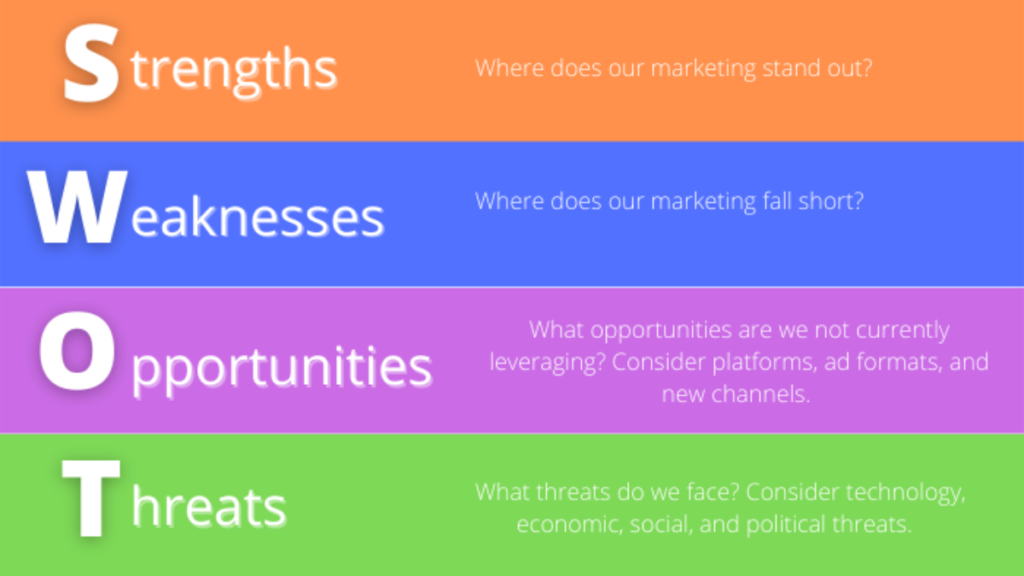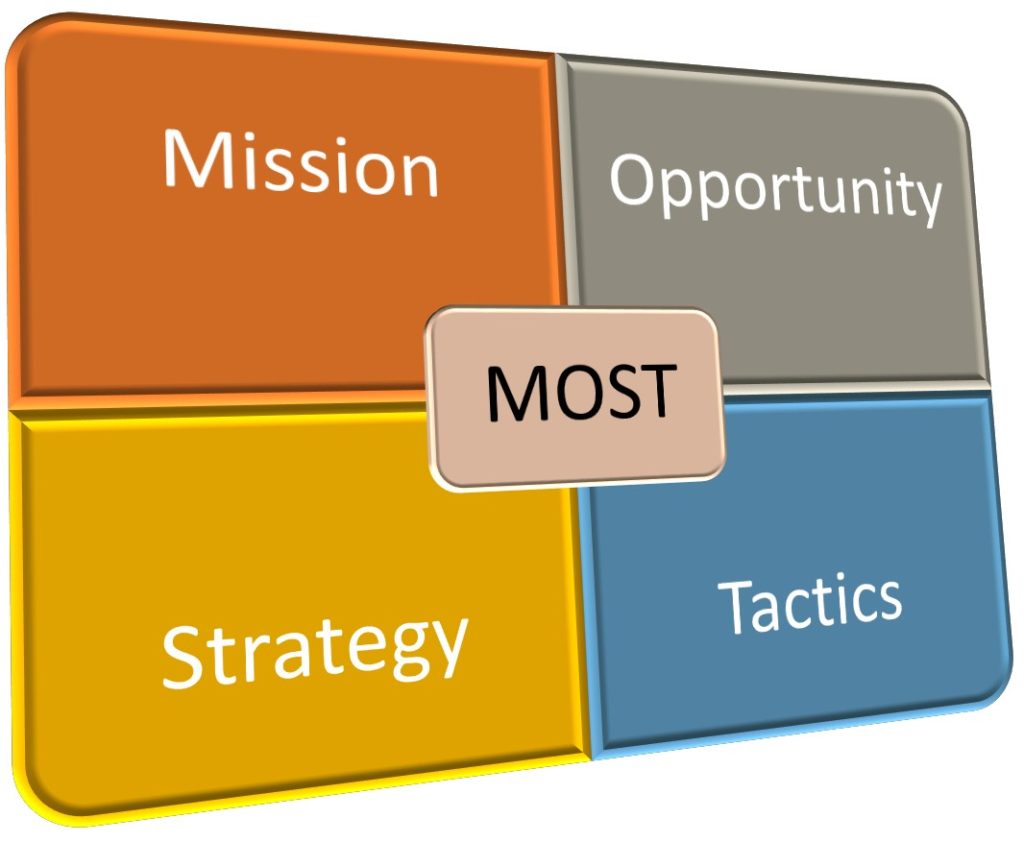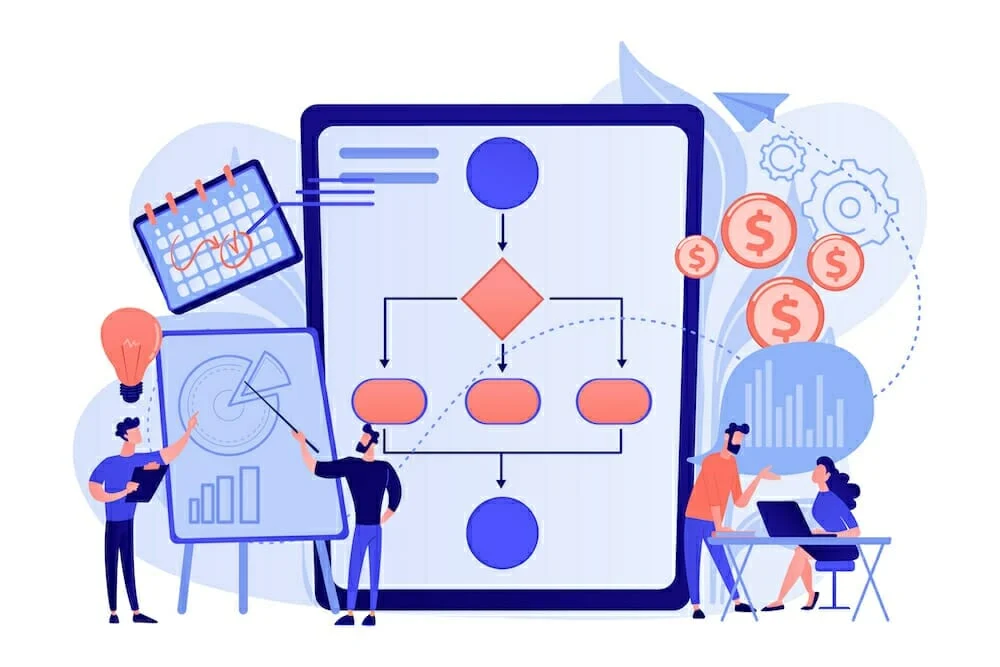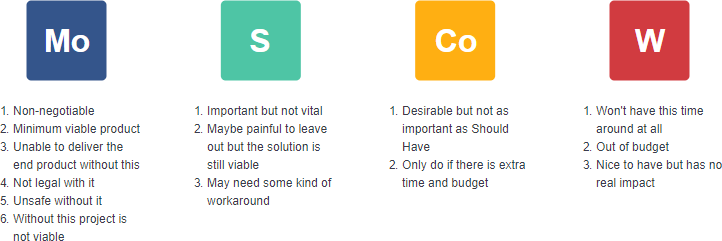Top 10 Versatile Business Analysis Models
In the ever-evolving landscape of business, the key to problem-solving and decision-making often lies in the methodologies we employ.
Business Analysis Models are conceptual frameworks that offer structured approaches for dissecting and analyzing complex challenges.
They provide the toolkit that business analysts need to approach problems systematically, make recommendations, and implement solutions.
In this blog post, we will dive deep into ten versatile Business Analysis Models that have proven their value across a myriad of industries and challenges.
SWOT Analysis

In the realm of Business Analysis Models, SWOT Analysis is a cornerstone framework widely used across various sectors.
This model evaluates Strengths, Weaknesses, Opportunities, and Threats related to a business project or venture.
Through SWOT, analysts are enabled to take a deep dive into the internal dynamics that may bolster or undermine a project, as well as the external factors that could potentially aid or hinder its success.
The SWOT Analysis allows business analysts to systematically review the multitude of factors that could impact the venture, providing a clear roadmap for strategic planning and decision-making.
Let’s look at a real-world application of the SWOT Analysis within the Business Analysis Models framework.
Imagine you are part of an eCommerce platform that’s looking to expand its market share.
One of the first steps could be conducting a SWOT Analysis. Your Strengths might be an already extensive customer base and a wide variety of products.
However, Weaknesses could manifest in the form of a website that’s not very user-friendly or suffers from slow loading times, which could deter potential customers.
Opportunities could be seen in current market trends that indicate an uptick in demand for home fitness products, a niche that your platform hasn’t fully explored.
On the flip side, Threats might include a new competitor with a more streamlined shopping experience and aggressive marketing tactics. Armed with this information, the business can create strategies that capitalize on strengths and opportunities while mitigating weaknesses and threats.
This demonstrates how SWOT is not just a theoretical concept but a practical tool within Business Analysis Models for actionable business insights.
PESTLE Analysis

The PESTLE Analysis is another critical tool in the arsenal of Business Analysis Models. Unlike SWOT, which also incorporates internal factors, PESTLE is solely focused on the external macro-environmental elements affecting an organization.
Specifically, it examines Political, Economic, Social, Technological, Legal, and Environmental factors to give a holistic view of the landscape a business operates within.
The PESTLE Analysis is invaluable for businesses to align their strategies with external conditions, thereby increasing the likelihood of success.
By looking at each of the six components, an organization can effectively anticipate challenges and opportunities that may arise, making it a go-to model in business analysis planning.
To illustrate the application of PESTLE within Business Analysis Models, let’s consider a real-world example. Suppose an energy company is contemplating entering a new market by expanding its operations into a different country. The first step would likely involve conducting a thorough PESTLE Analysis.
The Political component would scrutinize the country’s government stability and regulatory stance on energy, especially renewable sources, if that’s the company’s focus.
The Economic aspect would delve into the country’s GDP, inflation rates, and overall economic stability.
The Social aspect would look at cultural attitudes towards renewable energy and consumption habits.
Technologically, the analysis would assess the infrastructure available for energy production and distribution.
Legally, it would be important to understand the laws regulating energy production and if they align with the company’s business model. Finally, the Environmental component would examine the country’s policies on sustainability and environmental protection.
The information gathered from the PESTLE Analysis would then help the company decide whether it is viable to expand into this new market and what strategies it should employ to make the venture a success.
Thus, PESTLE serves as a multi-dimensional tool within Business Analysis Models that aids organizations in making informed strategic decisions.
MOST Analysis

The MOST Analysis is a unique addition to Business Analysis Models that concentrates explicitly on the internal elements of an organization.
The acronym stands for Mission, Objectives, Strategies, and Tactics, and the model serves as a structured way for business analysts to align these core components with the company’s long-term goals.
Unlike external-focused models like PESTLE, the MOST model delves into the intrinsic mechanisms that drive an organization forward.
It is particularly useful when a business is going through transitions or strategic planning stages, ensuring that internal operations are consistent with the organization’s overall objectives.
It helps business analysts identify areas that need recalibration, which could range from departmental strategies to larger organizational policies.
In terms of the real-world application of MOST within Business Analysis Models, consider a tech start-up focusing on democratizing tech education.
The Mission in this scenario would be the broad, overarching goal, which is to make tech education accessible to all.
Objectives might include milestones like reaching 10,000 active users on their platform within a year or getting five institutional collaborations for content creation.
Strategies could involve launching a range of online courses in different tech fields, perhaps starting with coding languages.
Tactics are the nitty-gritty actions needed to carry out these strategies, such as creating targeted social media marketing campaigns or offering initial courses at a discounted rate to attract users.
The MOST Analysis would bring coherence to these different layers, helping the start-up maintain alignment between its day-to-day operations and its strategic goals.
By using MOST, the start-up would be employing one of the valuable Business Analysis Models to ensure they are internally aligned, thereby increasing the chances of external success.
Business Process Modelling (BPM)

Business Process Modelling (BPM) is an integral part of Business Analysis Models that focuses on providing a visual representation of various business processes.
This model enables organizations to understand, analyse, and optimize their internal procedures.
The primary advantage of using BPM in your business analysis toolkit is that it helps to break down complex processes into simpler elements, providing a clear roadmap for improvement.
Whether it’s the handover between different departments or the series of tasks that a product goes through from conception to delivery, BPM shines a light on the intricacies of workflows.
It’s a model particularly useful for identifying bottlenecks, inefficiencies, or even opportunities for automation within a system.
For a real-world application, consider a supply chain management company seeking to optimize its operations. Within the framework of Business Analysis Models, this organization could use BPM to create a detailed diagram illustrating the flow of goods from the point of origin—namely, the suppliers—all the way to the end consumers.
The model might reveal, for instance, that a particular warehouse is consistently causing delays or that certain shipping routes are no longer cost-effective due to changes in fuel prices or tolls.
By visualizing these processes through BPM, the company can accurately identify where their supply chain is faltering and where there’s room for improvement.
Consequently, targeted strategies can be developed to resolve these issues, be it through personnel training, technological investment, or process redesign.
Using Business Analysis Models like BPM, the supply chain company is better equipped to make informed, effective decisions.
MoSCoW Method

The MoSCoW Method is an essential tool in the suite of Business Analysis Models, particularly valuable for prioritizing project requirements.
This model divides features or tasks into four categories: Must-haves, Should-haves, Could-haves, and Won’t-haves.
By classifying requirements in this manner, teams can focus on what is absolutely necessary for a project’s success, ensuring that resources are allocated efficiently.
“Must-haves” are non-negotiable items that the project needs to succeed, “Should-haves” are important but not vital, “Could-haves” are nice to have but not necessary, and “Won’t-haves” are items that are out of scope for the current project.
This method is frequently used to balance the project scope, time, and resources, and is especially popular in agile methodologies.
For a real-world example, let’s consider a software development project for creating a new mobile shopping app.
In the Business Analysis Models framework, employing the MoSCoW Method would help the team define priorities. “Must-haves” could be core functionalities like a user-friendly interface for browsing products, a secure login mechanism, and an efficient search feature.
These are elements without which the app would fail to serve its primary purpose. “Should-haves” might include additional sorting options for products or a recommendation engine.
“Could-haves” may encompass features like social sharing options or customer reviews, which would enhance the user experience but are not critical for the initial launch.
Finally, “Won’t-haves” could be items like a built-in chat support feature, which, although useful, could be outside the project’s current scope and budget.
By applying the MoSCoW Method, the team can make effective decisions to focus on what really matters, ensuring a successful project outcome.
CATWOE

The CATWOE model stands as a unique approach in the portfolio of Business Analysis Models, allowing analysts to take a 360-degree view of a situation by evaluating Customers, Actors, Transformation Processes, World View, Owner, and Environmental Constraints.
By dissecting each of these elements, CATWOE enables business analysts to get a robust understanding of a system’s operation and its interaction with various internal and external elements.
For instance, “Customers” refer to those who are affected by the process, “Actors” are the people or systems carrying out the process, “Transformation Processes” refer to the changes that take place, “World View” represents the bigger context in which the process exists, “Owner” is the person or entity that owns the process, and “Environmental Constraints” are external factors that affect the process.
In a real-world setting, let’s consider a healthcare provider aiming to optimize its patient care system.
Employing the CATWOE model from the Business Analysis Models toolkit would be immensely beneficial. “Customers” would be the patients receiving care, and possibly their families. “Actors” would include medical staff like doctors and nurses who administer treatment.
The “Transformation Processes” involve the diagnosis and treatment of patients. The “World View” could include the healthcare provider’s mission to offer top-tier medical services. The “Owner” is the healthcare organization or perhaps the hospital board.
Finally, “Environmental Constraints” would encompass healthcare laws, regulations, and perhaps even societal expectations about healthcare standards. By meticulously analysing each of these CATWOE elements, the healthcare provider can gain valuable insights into how the patient care system can be optimized, helping to ensure successful outcomes and high-quality care.
The Five Whys
The Five Whys technique is a simple but effective tool among the available Business Analysis Models for drilling down into the core of a problem by asking ‘Why?’ multiple times.
Initially developed as part of Lean methodology, the aim is to move beyond the surface-level symptoms of an issue to uncover the actual root cause.
This approach saves time and resources by ensuring that organizations solve the right problem, rather than merely addressing its symptoms. Asking “Why?” five times in succession encourages critical thinking and compels teams to consider the sequential cause-and-effect chain that led to the problem at hand.
To illustrate its application in a real-world context, consider a company that has experienced a sudden drop in sales.
Instead of hastily implementing sales-boosting strategies, the company employs the Five Whys technique from its suite of Business Analysis Models.
The first “Why?” might reveal that website traffic has diminished. The second “Why?” could indicate that the company’s search engine ranking has plummeted. Digging deeper, the third “Why?” may discover that the website’s SEO is not optimized.
The fourth “Why?” might unveil that the SEO team is unaware of the latest best practices, and finally, the fifth “Why?” could reveal that the root cause is a recent change in Google’s search algorithm that the team was not updated on.
By identifying the core issue—lack of awareness about algorithm changes—the company can now focus on educating its SEO team and adapting its practices, ensuring a more targeted and effective solution.
In summary, the utility of Business Analysis Models in today’s intricate business landscape is immense.
These models serve as systematic guides for addressing various business challenges, enhancing operational efficiency, and accomplishing strategic goals.
They provide a structured framework for capturing requirements, understanding stakeholder needs, and developing actionable solutions.
Given the complexities that businesses face in this digital age—from rapid technological changes to evolving customer demands—the role of Business Analysis Models in problem-solving and decision-making is crucial.
For instance, consider a multinational company looking to penetrate a new market. The array of challenges includes understanding the new market’s customer behaviours, compliance regulations, and competitive landscape.
Here, multiple Business Analysis Models can be employed. A PESTLE analysis could assess the macro-environmental factors like political stability and economic conditions.
SWOT analysis might be used for evaluating the company’s internal capabilities and external opportunities.
Finally, the MoSCoW method could prioritize which features to include in the initial product offering for this market.
Combining these models provides a multi-dimensional analysis that guides the business towards effective strategizing and execution.
Regardless of whether you are an experienced business analyst or just starting in the field, a good grasp of these models can be your invaluable toolkit for navigating the complexities that modern businesses inevitably encounter.











